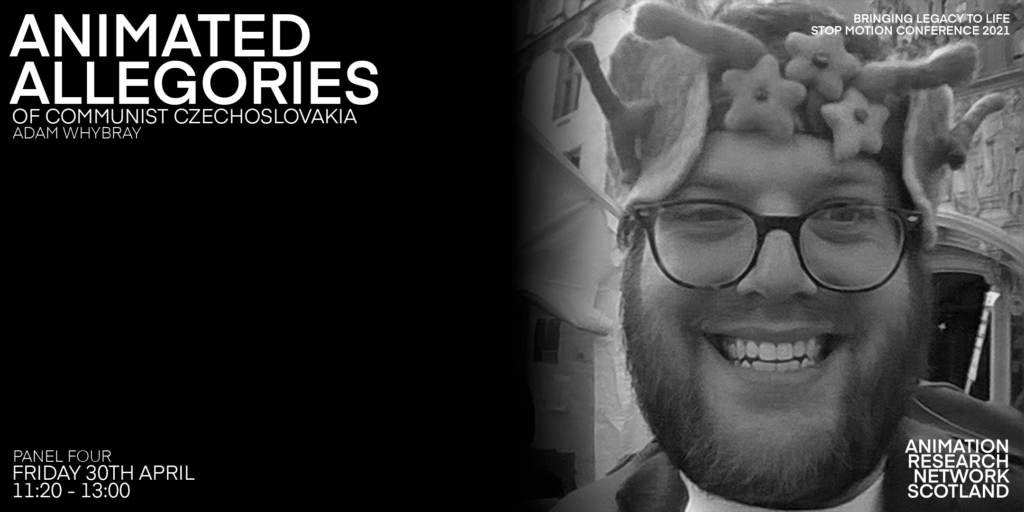Adam Whybray
Dr Adam Whybray lectured in Film Studies at the University of Suffolk but has recently relocated to Maastricht. He gained his PhD in the Philosophy of Film from the University of Exeter in 2015. His book The Art of Czech Animation: A History of Political Dissent and Allegory was published by Bloomsbury in July 2020. This paper is an extension of a section of The Art of Czech Animation on Garik Seko that had to be removed for the sake of brevity. The reflections on the function of metaphor/metonym in stop-motion are covered in considerably more depth in that publication
Abstract
This paper will examine films by three stop-motion animators – Garik Seko, Václav Mergl, Jan Švankmajer – who worked in Communist-era Czechoslovakia. My argument is that the animations which worked most effectively as political allegory made recourse to metonymy over metaphor, as reflected in the differing levels of censorship experienced by the filmmakers. Seko, who experienced the least, animated objects in a way incommensurate with their objecthood. Mergl, who has a slightly more complicated relationship with the regime, used objects metaphorically, standing in for broader abstract concepts. Švankmajer, who repeatedly faced censorship throughout his career, used objects in their embodied objecthood, often on terms alien from the human.


